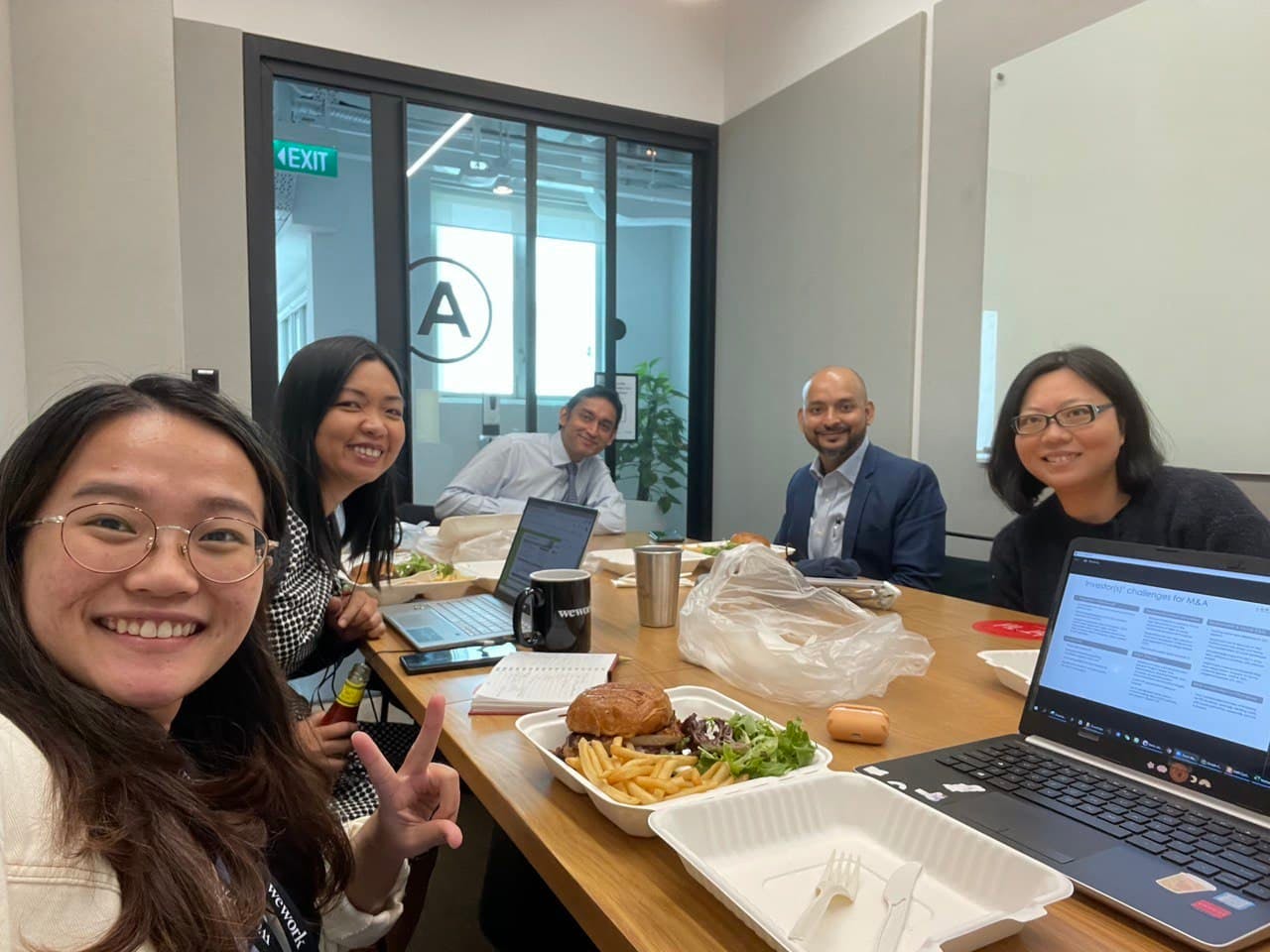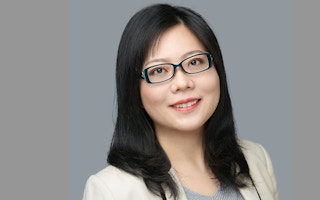Liming Qiao’s job is evangelising about the benefits of wind energy.
To continue reading, subscribe to Eco‑Business.
There's something for everyone. We offer a range of subscription plans.
- Access our stories and receive our Insights Weekly newsletter with the free EB Member plan.
- Unlock unlimited access to our content and archive with EB Circle.
- Publish your content with EB Premium.
As Asia head for the Global Wind Energy Council (GWEC), a Brussels-headquartered trade association for the wind power industry, she spends much of her time trying to convince government officials to weave wind into their energy plans in a region still heavily reliant on fossil fuels.
Asia is home to about a third of the world’s wind capacity, with the majority in Qiao’s home country, China. But the region’s wind potential is projected to increase ninefold by 2050 as energy-hungry countries such as Vietnam ramp up their wind capacity, under pressure to transition to renewables from polluting coal.
Qiao has worked in the field of climate and energy since 2003. Prior to joining GWEC, she spent three years as programme coordinator at World Wide Fund for Nature (WWF) in Beijing, leading climate programmes. She moved to GWEC in 2008, first based in Brussels as policy director, then in Beijing as China director. She was appointed Singapore-based head of Asia in February last year.
Here’s how her typical working day plays out:
7am: I have two kids, one is in pre-school, the other in primary school. I get up early to prepare their breakfast and send them to school. I will then head home or go to the office. Working from home is increasingly practiced in Singapore as the result of the Covid-19 outbreak, but it has been in our DNA for a long time. We usually only go to the office once or twice a week.
9am: Open my inbox with a cup of tea. I note down important updates and new tasks to add to my to-do list. I browse the headlines of industry news updates and bookmark important content to read later during my free time.
One email is from our partner in Vietnam, who shares news on the recent Power Development Plan 8 (PDP8) draft update. Vietnam’s onshore wind target has been raised to 20 gigawatts (GW) by 2030 and offshore wind to 5GW. In the past few months, we have been working really hard to push for a higher wind energy target in the PDP8 draft. We had workshops, meetings with government agencies, including the Prime Minister Pham Minh Chin in Glasgow at the COP26 climate negotiations. I’m thrilled to see more ambition to match the country’s net-zero target by 2050, announced in December.
10am: Zoom meeting with the Asia team. With minimum face-to-face interaction, we dedicate at least half an hour each day for an informal catch-up. We update each other on the progress we’re making. Working in a lean team managing Southeast Asia and East Asia means that all five of us must wear multiple hats.
“
We need to remember that the energy transition has not been fully embraced in Southeast Asia — coal still dominates the system.
10:30am: Jump into work. This is the time of year for planning. We have a call with one of our event partners, the European Chamber of Commerce Taiwan, to go through the plan for the Global Offshore Wind Summit Taiwan, an event we’ve been running since 2019. Due to the pandemic, it was changed to a half-day hybrid event last year, but we hope to expand it with more offerings for our sponsors and attendees this year.
Taiwan is one of our priority markets. We host regular policy meetings with the Ministry of Transportation and Communications, Ministry of Economic Affairs, and our member companies to discuss concern over requirements for local content in offshore wind tenders and the need to upgrade port infrastructure for wind farm construction. Taiwan is a pioneer in offshore wind and a case study in how to start a new renewable energy industry from scratch. It had the right policies in place to kickstart the industry, and was open to the global market, bringing in investment, talent and technologies in a short period of time.
12pm: Lunch. When working from home, I make a quick sandwich and eat it on the balcony while taking in some Vitamin D. When in the office, all of us get takeaways from various restaurants and eat together.

A GWEC Asia team lunch at the organisation’s office space in Singapore. From left to right: Esther Fang, communications and policy coordinator; Aileen Vitug, business development and event manager; Naveen Balachandran, special advisor, Southeast Asia; Raveen Singh, former business development and operations manager; and Liming Qiao. Image: GWEC
1pm: Dial into a call with Mark Hutchinson, chair of the GWEC Southast Asia taskforce (SEATF), a working group focused on accelerating wind deployment by promoting a better policy environment. We have categorised the region into three tiers according to the level of engagement on the topic; tier 1: Vietnam, tier 2: Philippines and Thailand, tier 3: Indonesia. We have been particularly active in Vietnam over the past two years. It is a young market where large-scale offshore wind projects are not likely to be connected to the grid until 2026 or later, and a clear regulatory framework is yet to be drawn up.
The scope of work for the taskforce involves drafting technical research papers and engaging with government representatives. One challenge of leading the working group is navigating a range of requests from various stakeholders to identify the policies that will drive growth in the wind sector. Another challenge is communicating these policy requests to various government agencies. This takes time. There are many exchanges which involve presenting reports and analysis. We need to remember that the energy transition has not been fully embraced in Southeast Asia — coal still dominates the system. It can be really tricky to get our arguments across. Changing a government’s perception of renewable energy is not an easy process.
The pandemic has also drastically reshaped the way government meetings are done. Now most meetings are done online. This is a blessing in disguise. The virtual space has reduced the complexity of setting up a meeting with government stakeholders. Last year we held more meetings with government officials than ever before.
2pm: Check the to-do list. Finally have some time to edit a policy brief. This briefing is for a workshop with the Central Economic Committee (CEC) of Vietnam on offshore wind development. This is part of a bigger process to ensure the Vietnamese government understands the importance of offshore wind in shaping the country’s energy transition.
2:45pm: Stretch and relax. Move my laptop to a standing table for a change of scene.
3:00pm: Join a webinar as a speaker. I was invited by European Climate Foundation Asia programme Tara to talk to its partners in the Philippines about offshore wind. Philippine civil society is very active, and it was heartening to see the group embrace wind as a solution for a just energy transition.
4pm: Meeting with a GWEC member company. I regularly schedule calls with members to understand their needs and keep an eye on industry developments.
5pm: Weekly meeting with global GWEC colleagues. As head of Asia, I need to catch up with the other regional heads to align our work and make sure the organisation is moving forward together.
5:30pm: Finishing up for the day. I look through the rest of the afternoon’s emails to work out what needs doing tomorrow.
6:30pm: Family time. We go for a swim or take a stroll in the park. Or we may watch some TV in the living room — the BBC documentary Our Planet is a current favourite.
7:30pm: Dinner time and facetime with my parents. As an expat living in Singapore, we do our calls with the kids’ grandparents around dinner time. It’s essential for the whole family to stay connected.
8:30pm: Put the kids to bed. I also use this time to relax and read. I am currently reading a novel called The Rice Sprout Song by Eileen Chang, which describes village life in China in the early 1950s. It is very hard to find books that truthfully describe that part of history in rural China. Her story is quite remarkable.
11:00pm: Lights out, recharge for another day.














